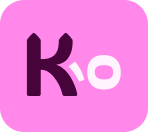
Two-sided platform for residents and landlords, my first product design journey
Platform where landlords can manage their deposits for residents, send out invites, claim and release.
Project: Start up
Client: Reon / Standby
Role: Product designer
Team: Project Manager, Developers, QA, Designer + others
Project intro
This was the first design project I worked on after transitioning from frontend development into product design.
I was involved in it on and off over the span of three years, alongside other projects.
The platform had two main user types: landlords and tenants. Initially, our focus was on the landlord side.
There wasn’t much brand direction at the start the priority was simply to build something functional. The plan was to revisit and refine the branding later.
This turned out to be the most complex project the company had developed during my time there. We faced several technical challenges both due to legal requirements and because we were integrating with external platforms.
I learned so much from working on this startup, especially as it kept growing and becoming more complex.
My biggest takeaway? The importance of user testing. We didn’t do any in the early stages, and looking back, it would have saved us a lot of time (and likely helped us avoid building some unnecessary features too).
This platform is mainly focused on landlords. They upload their rent roll and send out invites to their residents to request a deposit through the platform. From there, they can release or claim deposits, view all their units, and access deposit history.
As I mentioned above, we didn’t do any user testing in the beginning. Instead, we gathered feedback once users started trying out the platform, and iterated based on that.
Here are some snapshots of screens for the landlord
As a resident, you wouldn’t use the Standby platform very often. You’d only go through the onboarding steps after being invited by your landlord.
Once the onboarding is completed, you receive a Standby Deposit Certificate. After that, there’s usually no need to log into the platform again.
“Simple and straight to the point” -user testing participant
There are a couple of mandatory steps that a resident has to go through when accepting an invite to pay the deposit via Standby from their landlord.
It’s always a fine balance keeping the flow short and not overwhelming for the user, while also avoiding cramming too much into a single step. Combining too much information into one screen can easily make the form feel crowded, and users might overlook something important.
I did user testing for this onboarding, and the feedback was really positive. Users said it felt simple and to the point, no unnecessary steps or filler text. Several users even mentioned how surprised they were by how fast they got through it, especially compared to similar application processes they’d experienced in the past.
To be honest, I had some difficulty designing the resident dashboard, mostly because I’m not a fan of adding unnecessary “fluff” just to fill white space.
Considering that most residents might only log in once a year or maybe not at all. I decided to keep the dashboard as clean and minimal as possible, showing only the essential information they would need at a glance.
Here are two snapshots of it:
The first one shows the dashboard when a user has started, but not completed, the onboarding process.
The second shows the view after they’ve received a Standby Deposit.
The first design system I created
As the project grew, the system expanded and evolved alongside it. Working as a solo designer, I focused on finding best practices for building components, learning through trial and error what setups worked well — and what didn’t.
Since Figma is constantly evolving, some of the components I built then would probably look a bit different if I created them today. Lately, I’ve been exploring Figma Variables more actively, and I believe they offer a strong foundation for scalable systems going forward.
Here are some snapshots from Figma
Rebranding: Separate color identities for landlords and residents
We recently worked with a branding agency to rebrand the platform. Together with the marketing director, we decided to create slightly separate visual identities for landlords and residents.
This decision was mainly driven by marketing strategy and here you can see the updated color palette.
This project is now live and supports over 1,000 rental units. It continues to evolve.
The take away
If I were to design a project this big and complex again, I’d start with a clearer vision for the brand’s tone of voice. I’d also prioritize more user research and testing before developing or adding new features.
Even though groundwork like that takes more time upfront, it saves time (and headaches) in the long run by avoiding guesswork and uncertainty about what the user actually wants or needs.
